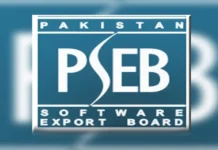Telecommunications in Pakistan have come a long way since its inception in the
country. The journey started back in 1947 when Pakistan was founded and inherited a
poorly developed telecommunication infrastructure from the British Raj. It took several
decades for the country to catch up with the world and establish a modern
telecommunication system. This article will take you through the history of telecom in
Pakistan, from its early days to its current state.
Early Days of Telecom in Pakistan: Pakistan inherited a rudimentary telecommunication
system from the British Raj. The telecom infrastructure consisted of a few copper-wire
lines and a limited number of manual exchanges. At that time, telecommunication was
mainly used for voice communication, and the penetration rate was very low. The first
telephone exchange was installed in Lahore in 1948, which had a capacity of only 50
lines.
During the early 1950s, the Pakistan Telecommunication Authority (PTA) was
established to regulate the telecommunication sector in the country. The PTA started
working on expanding the telecommunication infrastructure and improving the quality of
service. In 1953, the first telex service was introduced in Pakistan, which was used for
international communication.
READ MORE: Emirates and United Activate Codeshare Partnership to Enhance Connectivity to the US
Expansion of Telecom in the 1980s: The real expansion of the telecommunication
sector in Pakistan started in the 1980s when the government decided to liberalize the
sector and invite private investment. The first mobile phone service was launched in
1990 by PakTel, which later became known as Ufone. At that time, the penetration rate
of telecommunication was very low, with only 0.25 million telephones for a population of
84 million.
During the 1990s, several other mobile phone companies entered the market, including
Mobilink, Telenor, and Warid. The competition between these companies led to the
rapid expansion of the telecommunication sector in Pakistan. The introduction of
prepaid services in 1999 further boosted the growth of the sector.
Modern Telecom in Pakistan: Today, Pakistan has a modern and robust
telecommunication infrastructure, with a penetration rate of over 80%. The country has
over 160 million mobile phone subscribers and over 5 million broadband internet users.
The government has also launched several initiatives to improve the quality of service
and expand the reach of telecom services in remote areas.
One of the most significant developments in recent years has been the launch of 3G
and 4G services in Pakistan. These services have brought high-speed internet
connectivity to millions of people, enabling them to access online services and
participate in the digital economy. The government has also launched the Digital
Pakistan initiative, which aims to transform the country into a knowledge-based
economy.
Conclusion: The telecom sector in Pakistan has come a long way since its early days.
The country has made significant progress in expanding the reach of telecommunication
services and improving the quality of service. With the launch of 5G services on the
horizon, Pakistan is poised to take another leap forward in the telecom sector and
continue its journey towards a more connected and digital future.




